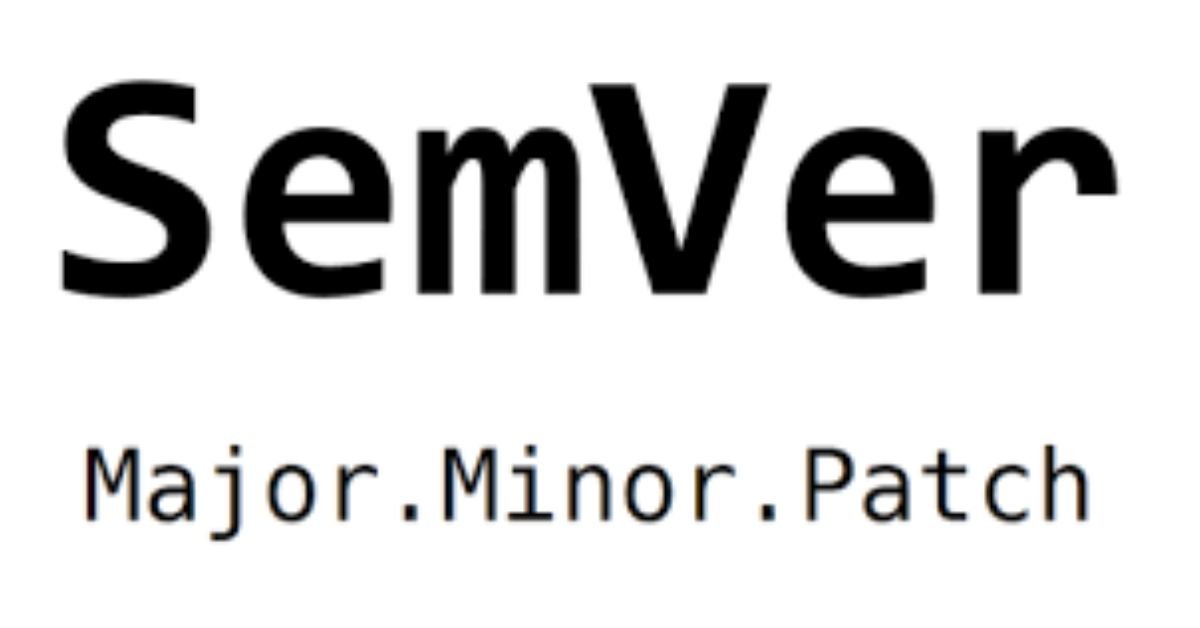Understanding versioning goes beyond just assigning numbers in files like package.json or pubspec.yaml. Versioning provides meaningful metadata for both humans and computers, helping to communicate changes and their impacts effectively. A well-chosen versioning scheme can simplify this communication and make the downstream impact of changes clear.
Two common versioning schemes are Semantic Versioning (SemVer) and Calendar Versioning (CalVer). Deciding between these options depends on your project type and specific needs. The choice isn’t binary; it requires careful consideration based on the nature of your codebase, user expectations, and external factors.
What is SemVer?
Semantic Versioning (SemVer) follows a structured format:
- MAJOR.MINOR.PATCH
The rules for each are straightforward:
- MAJOR: Incremented when making incompatible API changes.
- MINOR: Incremented when adding functionality in a backward-compatible way.
- PATCH: Incremented for backward-compatible bug fixes.
However, managing SemVer can become challenging as a codebase grows. With many developers contributing simultaneously, it may be difficult to track version increments. Tools like changesets or covector can automate version updates, ensuring consistency across large teams.
In some cases, strict adherence to SemVer might not be ideal. Some teams may choose to focus only on MAJOR and MINOR versions, grouping bug fixes with new features. Others might publish all three levels internally but only communicate the MAJOR version externally. The key is consistency and clear communication of the chosen strategy.
What is CalVer?
Calendar Versioning (CalVer) differs from SemVer in that it’s more flexible. It allows teams to define their versioning scheme based on time. The structure remains similar—MAJOR.MINOR.MICRO—but the meaning of each segment can vary. Most often, the MAJOR number represents the release year.
CalVer is particularly useful for projects tied to time-based milestones, such as marketing campaigns or seasonal releases. For example, software like Ubuntu uses the year in its version numbers (e.g., 22.04), which makes it easier to align with support and release schedules.
Versioning Considerations by Project Nature
Deciding between SemVer and CalVer depends on the nature of your project. Here’s a breakdown of how each scheme fits different project types:
Libraries
Libraries often benefit from SemVer because they have well-defined changes. Smaller libraries with minimal dependencies can use SemVer strictly, ensuring that version numbers communicate changes clearly. As code velocity increases, however, maintaining strict SemVer can become more complex. Teams may group changes into larger releases to manage dependencies better.
For monorepos, SemVer allows packages to adapt their version based on changes in related packages. This ensures consistency across the entire repository, simplifying the update process for users and developers.
Web Apps / Mobile Apps
In web and mobile apps, the versioning choice depends on user-facing changes rather than the codebase itself. Most users don’t care about minor changes or bug fixes but may notice design overhauls, often tied to marketing efforts. This makes CalVer attractive for apps with time-based releases, such as tax software, which might release a major update annually.
However, if the app’s release schedule doesn’t align with marketing needs, SemVer can be simpler for developers. This approach helps maintain a clear understanding of when functionality or bug fixes are added without considering time-based constraints.
Services that Expect Breakages
APIs and services that anticipate breaking changes often align well with SemVer. In REST APIs, for example, the MAJOR version is typically included in the URL (e.g., v1, v2). This helps communicate breaking changes directly to consumers. While MINOR and PATCH versions may be tracked internally, the primary focus remains on the MAJOR version to signal compatibility to external users.
However, maintaining multiple active versions of a service can increase complexity. As a result, some teams may choose to simplify their strategy by deprecating older versions gradually.
Additive-Only Services
Services that follow an additive-only model, where changes never remove existing functionality, can make use of either SemVer or CalVer. Since breaking changes are rare, most updates are minor, making the distinction between MAJOR and MINOR less relevant.
In this context, CalVer can work well by scheduling deprecations annually. For example, deprecated features can remain available until their usage drops, then be removed in the next year’s release. This aligns with a CalVer approach, where the MAJOR version changes yearly and MINOR releases cover additions.
Best Practices for Choosing a Versioning Strategy
- Match Versioning to User Needs: Consider who will consume the versioning data—developers, end-users, or both. SemVer can be more intuitive for developers, while CalVer aligns with non-technical stakeholder needs.
- Keep Documentation Clear: Whichever approach you adopt, ensure it’s well-documented. Clearly explain how version increments reflect changes in the codebase, so users know what to expect.
- Review Versioning Periodically: Your versioning needs may evolve. A project that starts with SemVer might later shift to CalVer as the user base or release cadence changes. Periodic reviews can keep the versioning scheme aligned with the project’s goals.
- Automate Versioning Where Possible: Use tools to automate version bumps. This reduces human error and helps maintain consistency across large teams or complex projects.
Conclusion and Recommendations
Both SemVer and CalVer offer unique advantages depending on your project’s nature. SemVer is ideal when precision in changes is crucial, such as in libraries or APIs. CalVer, on the other hand, suits projects tied to time-based releases or external marketing schedules. Flexibility is key, and the choice should be guided by the needs of your users and the evolution of your project.
No matter the versioning approach, consistency and transparency are vital. A well-documented strategy makes it easier for developers and stakeholders to understand how changes affect the software and its users.





